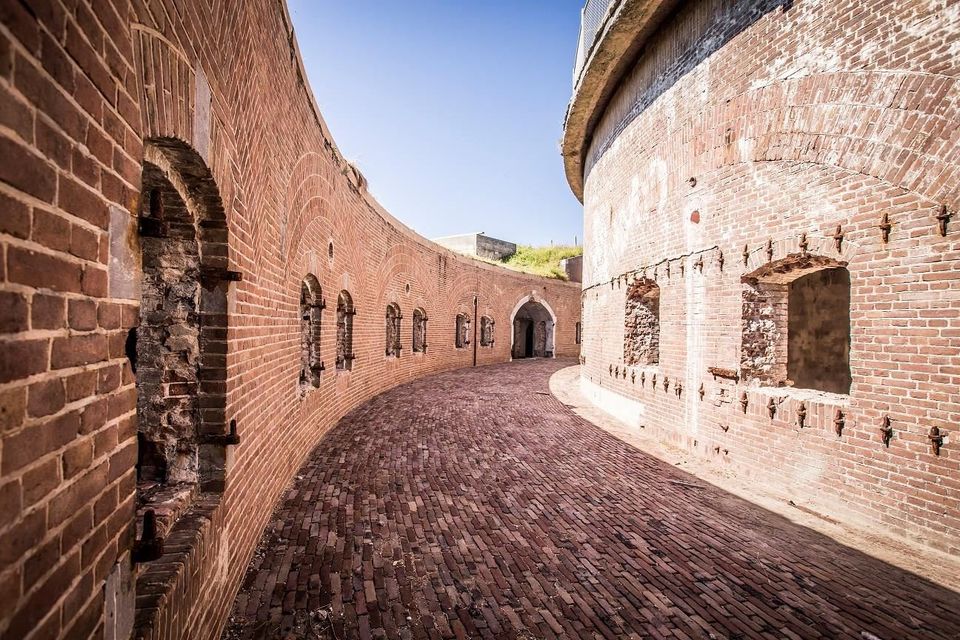Fort Harssens
DEN HELDER
Within the Stelling Den Helder, it was decided that an armored coastal fort had to be built on the sandbank Harssens. It wouldn't be the only armored coastal fort, but it would be a unique one in shape and execution. To man the fort, a new regiment was es
Take a look
In 1875, the Netherlands passed the fortress law. In this law it was layed out which areas in the Netherlands had to be able to be defended in case of war. Emphasis was put on the coastal defense, and for instance the defence of big cities like Amsterdam in the form of a Stelling around the capital.
Within the Stelling Den Helder, it was decided that an armored coastal fort had to be built on the sandbank Harssens. It wouldn't be the only armored coastal fort, but it would be a unique one in shape and execution. To man the fort, a new regiment was established. Fort Harssens is unique because of the biggest canons that have ever been put on top of a fort. In two domes, there were two canons each with a diameter of 30,5 cm (12'', 1'). Directed at navigation channel Molengat, they could propel objects up to 7 kilometers away. De domes were moved by hydraulics en could turn 360 degrees.
The fort was ready in 1885, en left empty in 1920. After the war, the German canons and armored domes were removed. After the war, the fort was used as a foundation for the harbor co-ordination center of the new naval port, and the dry canals were filled up with concrete. In 2010, a new start has been made to make the fort accessible again. Nowadays that is largely possible again, and guided tours are being given.
- Toelichting: Op diverse data worden rondleidingen verzorgd:
17 mei, 31 mei, 14 juni, 28 juni, 19 juli, 2 augustus, 6 september en 27 september.
Aanvang 13.00 uur.
Bijzondere rondleidingen op 9 en 10 mei 2020 tijdens het Helders Stellingweekend en op 6 juni 2020 tijdens Bunkerdag.
Here you will find Fort Harssens
Bevesierweg1781 AC DEN HELDER Plan your route naar Fort Harssens
from your location


